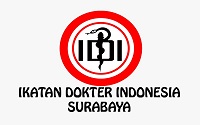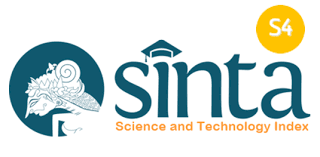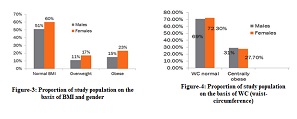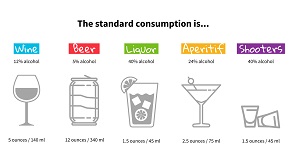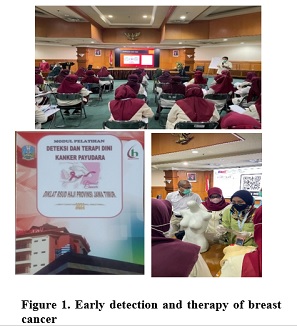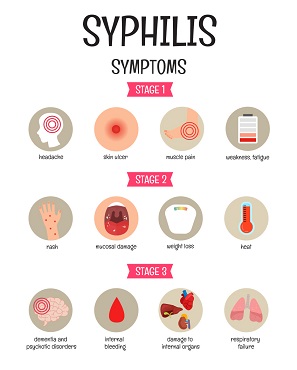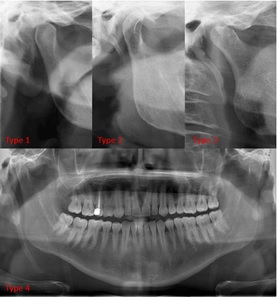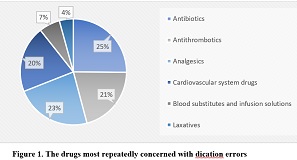Affecttive Development of Children Due to Anxiety During Pregnancy : A Literature Review

Given its potential to affect the growing fetus, maternal mental health during pregnancy is essential. Anxiety during pregnancy is associated with the socio-emotional development of the child, potentially resulting in behavioral and emotional issues in the future. Children of mothers who experience anxiety during pregnancy are predicted to experience poorer growth and development in infancy and preschool age. This study aims to determine the effects of anxiety during pregnancy. This study used a literature review approach from 8 relevant articles from the online databases Scopus, PubMed, Google Scholar, and Garuda. The inclusion criteria of this study were original research in Indonesian or English, respondents measured anxiety during pregnancy, and measurement of infant/child affective patterns, which were fully accessible. The findings indicated that a child’s affective development and anxiety during pregnancy are significantly correlated. It can be characterised by decreased attention to facial expressions in infants crying, sleeping, and feeding. In addition, the child may experience impaired socio-individual neurodevelopment, fine motor and emotional development, and poorer language. This can lead to negative behavioral development, such as hyperactivity and emotional disturbances, from preschool to adulthood. The more often and longer the mother experiences anxiety, the more likely the child is to have emotional and behavioral disorders.
INTRODUCTION
In a clinical and public health context, anxiety is a significant health risk. This includes that experienced by pregnant women. Women who experience significant physical and psychological changes during pregnancy are more likely to experience symptoms of anxiety and depression11.
Pregnancy-related anxiety is detrimental to both the mother’s and the child’s health22. Pregnant women who have it are more likely to have a caesarean delivery and to experience eating disorders33, increasing the prevalence of depression44, decreased sleep quality55, increased risk of suicide66, and postpartum emotions and negative parenting behaviors77. Feelings of fear and worry are hallmarks of mental health conditions known as anxiety disorders, which usually arise as a response to excessive fear or excessive worry about a particular situation88. Anxiety in pregnant women depends on the risk factors that affect it. The higher the risk factors for pregnant women’s pregnancy, the higher the anxiety level of the mother9,10910.
Maternal mental health during pregnancy should be of particular concern as it can potentially hurt the developing fetus88both physiologically, emotionally, and cognitively1111. A lower gestational age is linked to anxiety throughout pregnancy. And hurts fetal neurodevelopment and childbirth outcomes1212. Among them may increase the risk of low birth weight1313, allergic disorders14,151415, increased risk of childhood asthma and poorer growth in infancy and preschool age1616, higher body mass index at 54 months of age1717, emotional and behavioral problems1818, lower estimates of infant brain development1919, and negative temperament2020in their children.
Because of the fetus’s quick development, early life events can affect neurodevelopment, potentially increasing susceptibility to developmental and neuropsychiatric problems2121. Maternal control of emotional states is critical for children during pregnancy and childhood2222. Mothers who manage their emotions are less likely to experience affective problems in infants2323. Nevertheless, stress, anxiety, and depression during pregnancy frequently go undiagnosed by medical practitioners and are poorly managed2424. Given that the prevalence of anxiety and depressive symptoms during pregnancy and after childbirth varies widely across regions and poses significant risks to mothers and their babies, this study aimed to describe the effects that anxiety during pregnancy can have, particularly on the child’s affective development.
METHODS
This type of research is descriptive observational, using a literature review method from various articles published in national and international journals. The research article was searched online through Scopus, PubMed, Google Scholar, and Garba Rujukan Digital (Garuda) databases. This method aims to increase knowledge and understanding of the topics discussed by presenting research results published in journals to provide factual information or analysis from relevant literature reviews.
This article review used eight published primary research articles to obtain research data. The literature reviewed was from 2019 to 2024, with the keywords anxiety, pregnancy, maternal, child, and development. The inclusion criteria of this study include original research in Indonesian or English, respondents measuring anxiety during pregnancy, and measurement of infant/child affective patterns, which can be accessed in full. The exclusion criteria are review articles that do not follow the research objectives.
RESULTS
Based on the review of eight articles, anxiety during pregnancy can significantly affect affective disorders in infants/children, as shown in Table 1.
The research is quantitative, based on the review of the eight articles above. It uses a prospective longitudinal study method and a cohort study, which observes respondents at certain times to see their development from pregnancy to infancy/childhood, even preschool.
The respondents in the study were pregnant women up to the babies they had given birth to. Measured from the time of pregnancy, mainly from the second trimester gestational age and some from the first trimester, during labour to 1-8 weeks after delivery and preschool.
Author | Title | Type, Sample, Research Location | Results |
Schwarze et al. (2024)2222 | The role of perinatal maternal symptoms of depression, anxiety and pregnancy-specific anxiety for infants’ self-regulation: A prospective longitudinal study | Prospective longitudinal study; N = 225 mother-infant dyads in Germany | Anxiety, particularly during a mother’s pregnancy, was the most significant predictor of newborn self-regulation issues. It explained as much as 18% of the variance and predicted crying, sleeping, and feeding issues. Anxiety related to pregnancy was still a strong predictor of newborn self-regulation issues, even after considering the mother’s postpartum emotional symptoms. |
Zhang et al. (2023)88 | Impact of pregnancy-related anxiety on Preschoolers’ emotional and behavioral development: Gender specificity, critical time windows, and the cumulative effect | Cohort study; N = 1699 mother-infant dyads in China | Preschool-aged children of moms with pregnancy anxiety are far more likely to exhibit aberrant mood or behavior. Compared to males, girls appear to be more susceptible to parental pregnancy anxiety, particularly in terms of emotional disruption. Pregnancy anxiety that occurs in the third trimester of pregnancy has a significant impact on children’s emotional disturbance problems. Children who have emotional disorders and behavioral issues are more likely to be born to mothers who have had anxiety for an extended period throughout their pregnancy. |
Rogers et al. (2023)2525 | Association of maternal and paternal perinatal depression and anxiety with infant development: A longitudinal study | Longitudinal |
Yuksel F, Akin S, Durna Z. Prenatal distress in Turkish pregnant women and factors associated with maternal prenatal distress. Journal of Clinical Nursing 2014; 23: 54–64. DOI: 10.1111/j.1365-2702.2012.04283.x
Zhou J, Zhang S, Teng Y, et al. Maternal pregnancy-related anxiety and children’s physical growth: the Ma’anshan birth cohort study. BMC Pregnancy Childbirth 2023; 23: 384. DOI: 10.1186/s12884-023-05711-5
Santos AMD, Benute GRG, Santos NOD, et al. Presence of eating disorders and its relationship to anxiety and depression in pregnant women. Midwifery 2017; 51: 12–15. DOI: 10.1016/j.midw.2017.05.005
Skouteris H, Wertheim EH, Rallis S, et al. Depression and anxiety through pregnancy and the early postpartum: An examination of prospective relationships. Journal of Affective Disorders 2009; 113: 303–308. DOI: 10.1016/j.jad.2008.06.002
Çolak S, Gürlek B, Önal Ö, et al. The level of depression, anxiety, and sleep quality in pregnancy during coronavirus disease 2019 pandemic. J of Obstet and Gynaecol 2021; 47:2666–2676. DOI: 10.1111/jog.14872
Enătescu I, Craina M, Gluhovschi A, et al. The role of personality dimensions and trait anxiety in increasing the likelihood of suicide ideation in women during the perinatal period. Journal of Psychosomatic Obstetrics & Gynecology 2021; 42: 242–252. DOI: 10.1080/0167482X.2020.1734790
Hakanen H, Flykt M, Sinervä E, et al. How maternal pre- and postnatal symptoms of depression and anxiety affect early mother-infant interaction? Journal of Affective Disorders 2019; 257: 83-90. DOI: 10.1016/j.jad.2019.06.048
Zhang F, Zhou J, Zhang S, et al. Impact of pregnancy-related anxiety on preschoolers’ emotional and behavioral development: Gender specificity, critical time windows and cumulative effect. Journal of Affective Disorders 2023; 323: 176–184. DOI: 10.1016/j.jad.2022.11.085
Saputri IS, Yudianti I. Tingkat Kecemasan Ibu Hamil Trimester Iii Berdasarkan Kelompok Faktor Resiko Kehamilan. JMU 2020; 2: 16. DOI: https://doi.org/10.32807/jmu.v2i1.72
Hastanti H, Budiono B, Febriyana N. Primigravida Memiliki Kecemasan Yang Lebih Saat Kehamilan. IMHSJ 2021; 3: 167–178. DOI : 10.20473/imhsj.v3i2.2019.167-178
Szekely E, Neumann A, Sallis H, et al. Maternal Prenatal Mood, Pregnancy- Specific Worries, and Early Child Psychopathology: Findings From the DREAM BIG Consortium. Journal of the American Academy of Child & Adolescent Psychiatry 2021; 60: 186–197. DOI: 10.1016/j.jaac.2020.02.017
Dunkel Schetter C, Tanner L. Anxiety, depression and stress in pregnancy: implications for mothers, children, research, and practice. Current Opinion in Psychiatry 2012; 25: 141–148. DOI: 10.1097/YCO.0b013e3283503680
Rejnö G, Lundholm C, Öberg S, et al. Maternal anxiety, depression and asthma and adverse pregnancy outcomes – a population based study. Sci Rep 2019; 9: 13101. DOI: 10.1038/s41598-019-49508-z
Rosa MJ, Lee AG, Wright RJ. Evidence establishing a link between prenatal and early-life stress and asthma development. Current Opinion in Allergy & Clinical Immunology 2018; 18: 148–158. DOI: 10.1097/ACI.0000000000000421
Van Der Leek AP, Bahreinian S, Chartier M, et al. Maternal Distress During Pregnancy and Recurrence in Early Childhood Predicts Atopic Dermatitis and Asthma in Childhood. Chest 2020; 158: 57–67. DOI: 10.1016/j.chest.2020.01.052
Zhou J, Guo Y, Teng Y, et al. Maternal anxiety during pregnancy and children’s asthma in preschool age: The Ma’anshan birth cohort study. Journal of Affective Disorders 2023; 340: 312–320. DOI: 10.1016/j.jad.2023.08.037
Farewell CV, Thayer ZM, Puma JE, et al. Exploring the timing and duration of maternal stress exposure: Impacts on early childhood BMI. Early Human Development 2018; 117: 15–19. DOI: 10.1016/j.earlhumdev.2017.12.001
O’Donnell KJ, Glover V, Lahti J, et al. Maternal prenatal anxiety and child COMT genotype predict working memory and symptoms of ADHD. PLoS ONE 2017; 12: e0177506. DOI: 10.1371/journal.pone.0177506
Graham RM, Jiang L, McCorkle G, et al. Maternal Anxiety and Depression during Late Pregnancy and Newborn Brain White Matter Development. AJNR Am J Neuroradiol 2020; 41: 1908–1915. DOI: 10.3174/ajnr.A6759
Blair MM, Glynn LM, Sandman CA, et al. Prenatal maternal anxiety and early childhood temperament. Stress 2011; 14: 644–651. DOI: 10.3109/10253890.2011.594121
Buss C, Davis EP, Hobel CJ, et al. Maternal pregnancy-specific anxiety is associated with child executive function at 6–9 years age. Stress 2011; 14: 665–676. DOI: 10.3109/10253890.2011.623250
Schwarze CE, Von Der Heiden S, Wallwiener S, et al. The role of perinatal maternal symptoms of depression, anxiety for infant’s self-regulation: A prospective longitudinal study. Journal of Affective Disorders 2024; 346: 144-153. DOI: 10.1016/j.jad.2023.10.035
Van Den Heuvel MI, Johannes MA, Henrichs J, et al. Maternal mindfulness during pregnancy and infant socio- emotional development and temperament: The mediating role of maternal anxiety. Early Human Development 2015; 91: 103–108. DOI: 10.1016/j.earlhumdev.2014.12.003
Glover V. Maternal depression, anxiety and stress during pregnancy and child outcome; what needs to be done. Best Practice & Research Clinical Obstetrics & Gynaecology 2014; 28: 25–35. DOI: 10.1016/j.bpobgyn.2013.08.017
Rogers AM, Youssef GJ, Teague S, et al. Association of maternal and paternal perinatal depression and anxiety with infant development: A longitudinal study. Journal of Affective Disorders 2023; 338: 278–288. DOI: 10.1016/j.jad.2023.06.020
López-Morales H, Canet-Juric L, del- Valle MV, et al. Prenatal anxiety during the pandemic context is related to neurodevelopment of 6-month-old babies. Eur J Pediatr 2023; 182: 4213-4226. DOI: 10.1007/s00431-023-05112-y
McGuinn LA, Tamayo-Ortiz M, Rosa MJ, et al. The influence of maternal anxiety and cortisol during pregnancy on childhood anxiety symptoms. Psychoneuroendocrinology 2022; 139:105704. DOI: 10.1016/j.psyneuen.2022.105704
Wang X, Xie J, Wu Y, et al. Gender- specific effect of pregnancy-related anxiety on preschooler’s emotional and behavioral development: A population-based cohort study. Journal of Affective Disorders 2021; 279: 368-376. DOI: 10.1016/j.jad.2020.10.014
Thiel F, Iffland L, Drozd F, et al. Specific relations of dimensional anxiety and manifest anxiety disorders during pregnancy with difficult early infant temperament: a longitudinal cohort study. Arch Womens Ment Health 2020; 23: 535-546. DOI: 10.1007/s00737-019-01015-w
Porter E, Lewis AJ, Watson SJ, et al. Perinatal maternal mental health and infant socio-emotional development: A growth curve analysis using the MPEWS cohort. Infant Behavior and Development 2019; 57: 101336. DOI: 10.1016/j.infbeh.2019.101336
Mughal MK, Giallo R, Arnold P, et al. Trajectories of maternal stress and anxiety from pregnancy to three years and child development at 3 years of age: Findings from the All Our Families (AOF) pregnancy cohort. Journal of Affective Disorders 2018; 234: 318–326. DOI: 10.1016/j.jad.2018.02.095
World Health Organization. WHO recommendations on antenatal care for a positive pregnancy experience. Geneva: World Health Organization, https://www.who.int/publications/i/item/9789241549912 (2016, accessed 4 January 2024).
Sayal K, Heron J, Maughan B, et al. Infant temperament and childhood psychiatric disorder: longitudinal study. Child 2014; 40: 292–297. DOI: 10.1111/cch.12054
Liu Y-W, Liu H, Huang K, et al. The association between pregnancy-related anxiety and behavioral development in 18-month-old children: The mediating effects of parenting styles and breastfeeding methods. Journal of Affective Disorders 2023; 333: 392-402. DOI: 10.1016/j.jad.2023.04.014
Farber MJ, Kim MJ, Knodt AR, et al. Maternal overprotection in childhood is associated with amygdala reactivity and structural connectivity in adulthood. Developmental Cognitive Neuroscience 2019; 40: 100711. DOI: 10.1016/j.dcn.2019.100711
Pozzi E, Simmons JG, Bousman CA, et al. The Influence of Maternal Parenting Style on the Neural Correlates of Emotion Processing in Children. Journal of the American Academy of Child & Adolescent Psychiatry 2020; 59: 274–282. DOI: 10.1016/j.jaac.2019.01.018
Dégeilh F, Bernier A, Leblanc É, et al. Quality of maternal behaviour during infancy predicts functional connectivity between default mode network and salience network 9 years later. Developmental Cognitive Neuroscience 2018; 34: 53–62. DOI: 10.1016/j.dcn.2018.06.003
Copyright (c) 2025 Nina Qurniati, Endyka Erye Frety

This work is licensed under a Creative Commons Attribution-ShareAlike 4.0 International License.
- The journal allows the author to hold the copyright of the article without restrictions.
- The journal allows the author(s) to retain publishing rights without restrictions.
- The legal formal aspect of journal publication accessibility refers to Creative Commons Attribution Share-Alike (CC BY-SA).
- The Creative Commons Attribution Share-Alike (CC BY-SA) license allows re-distribution and re-use of a licensed work on the conditions that the creator is appropriately credited and that any derivative work is made available under "the same, similar or a compatible license”. Other than the conditions mentioned above, the editorial board is not responsible for copyright violation.






